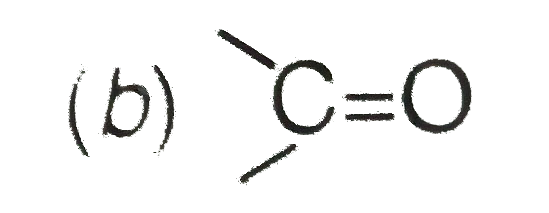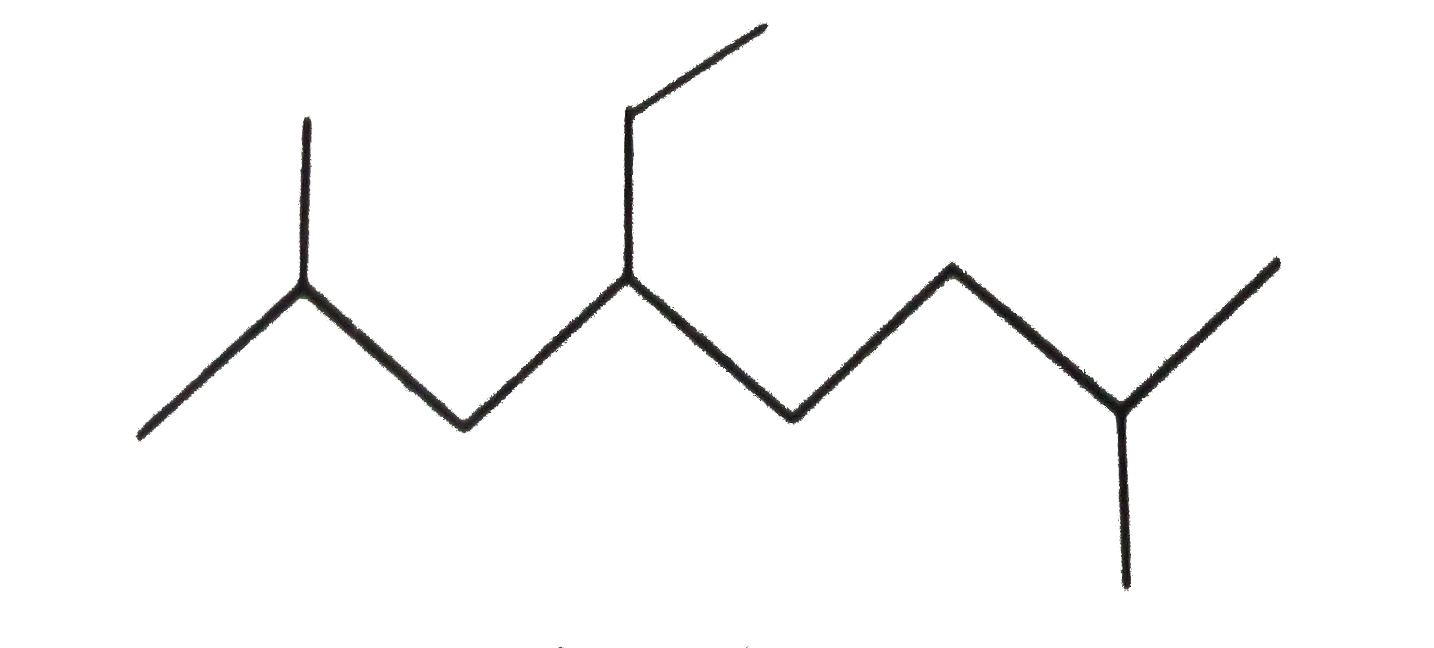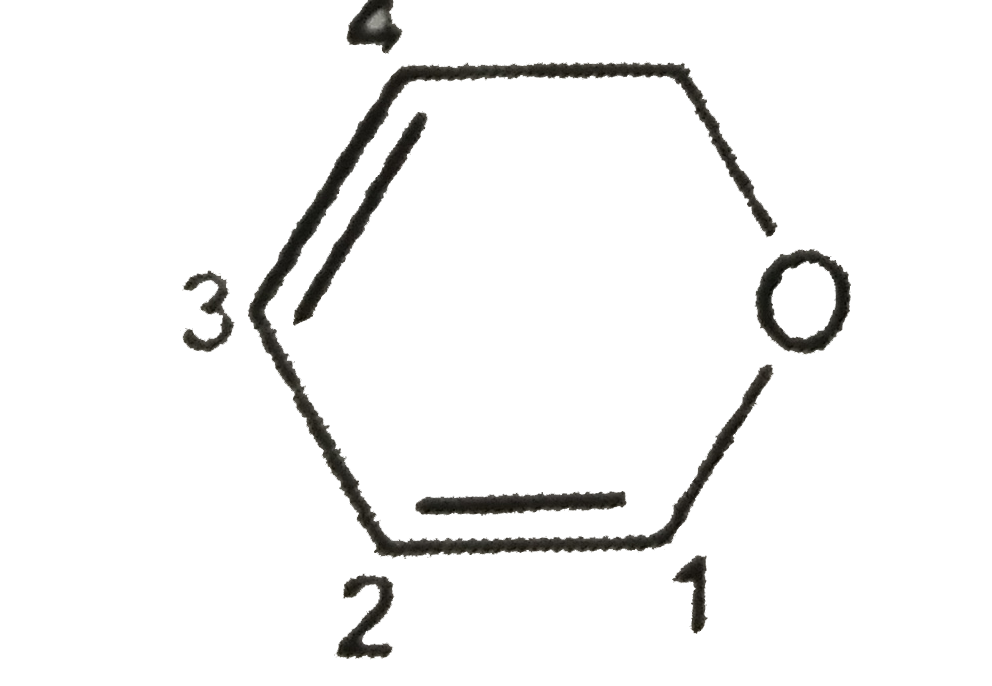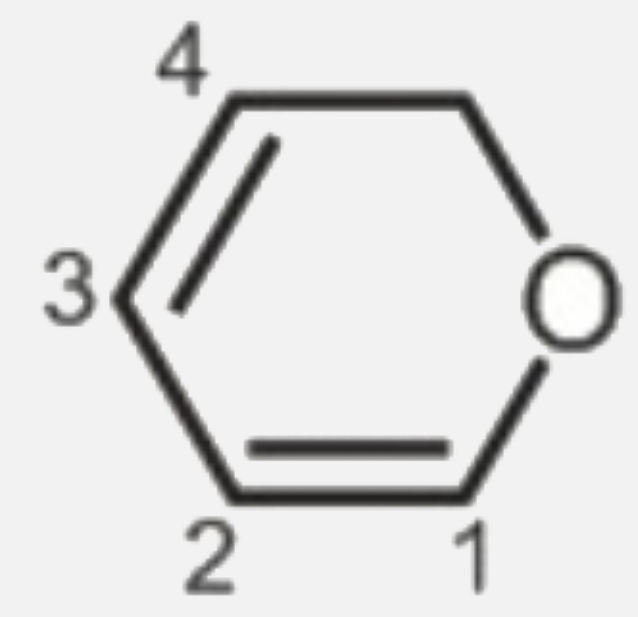The resonance effect is defined as 'the polarity produced in the molecule by the interaction of two π-bonds or between a π-bond and lone pair of electrons present on an adjacentatom.' The effect is transmitted through the chain.
In positive resonance effect, the transfer of electrons is away from an atom or substituent group attached to the conjugated system. This electron displacement makes certain positions in the molecule of high electron densities. In negative resonance effect, the transfer of electrons is towards the atom or substituent group attached to the conjugated system.
Which of the following shows +M effect ?
−N(CH3)2

−CN
Both (a) and (c)
The correct Answer is:A
To determine which of the following groups shows a positive resonance effect (+M effect), we need to analyze the given groups based on their ability to donate electron density through resonance. Here’s a step-by-step solution:
Step 1: Understand the Positive Resonance Effect
The positive resonance effect (+M effect) occurs when a substituent group donates electron density to a conjugated system. This typically involves groups that have lone pairs of electrons that can participate in resonance with the π-system of the molecule.
Hint: Look for groups with lone pairs that can interact with adjacent π-bonds.
Step 2: Analyze the Given Groups
1. Ammonia (NH3):
- Ammonia has a lone pair on nitrogen. When attached to a conjugated system (like benzene), the lone pair can resonate into the π-system, donating electron density. Thus, it shows a +M effect.
2. Carbonyl Group (C=O):
- The carbonyl group is an electron-withdrawing group because the oxygen is more electronegative than carbon. It pulls electron density away from the conjugated system, showing a -M effect.
3. Cyanide Group (CN):
- The cyanide group also has a triple bond between carbon and nitrogen. The nitrogen is more electronegative and pulls electron density towards itself, indicating a -M effect.
Step 3: Conclusion
From the analysis:
- Ammonia (NH3) shows a +M effect.
- Carbonyl Group (C=O) and Cyanide Group (CN) both show a -M effect.
Thus, the group that shows a +M effect is Ammonia (NH3).
Final Answer
Ammonia (NH3) shows the +M effect.
---
The positive resonance effect (+M effect) occurs when a substituent group donates electron density to a conjugated system. This typically involves groups that have lone pairs of electrons that can participate in resonance with the π-system of the molecule.
1. Ammonia (NH3):
- Ammonia has a lone pair on nitrogen. When attached to a conjugated system (like benzene), the lone pair can resonate into the π-system, donating electron density. Thus, it shows a +M effect.
- The carbonyl group is an electron-withdrawing group because the oxygen is more electronegative than carbon. It pulls electron density away from the conjugated system, showing a -M effect.
- The cyanide group also has a triple bond between carbon and nitrogen. The nitrogen is more electronegative and pulls electron density towards itself, indicating a -M effect.
From the analysis:
- Ammonia (NH3) shows a +M effect.
- Carbonyl Group (C=O) and Cyanide Group (CN) both show a -M effect.
Ammonia (NH3) shows the +M effect.
Similar Questions
The resonance effect is defined as 'the polarity produced in the molecule by the interaction of two π-bonds or between a π-bond and lone pair of electrons present on an adjacentatom.' The effect is transmitted through the chain.
In positive resonance effect, the transfer of electrons is away from an atom or substituent group attached to the conjugated system. This electron displacement makes certain positions in the molecule of high electron densities. In negative resonance effect, the transfer of electrons is towards the atom or substituent group attached to the conjugated system.
Which of the following does not show resonance effect ?
View SolutionThe resonance effect is defined as 'the polarity produced in the molecule by the interaction of two π-bonds or between a π-bond and lone pair of electrons present on an adjacentatom.' The effect is transmitted through the chain.
In positive resonance effect, the transfer of electrons is away from an atom or substituent group attached to the conjugated system. This electron displacement makes certain positions in the molecule of high electron densities. In negative resonance effect, the transfer of electrons is towards the atom or substituent group attached to the conjugated system.
Which of the following carboxylate ions is the most stable ?
View Solution
Knowledge Check
The number of lone pair of electrons on each atom of oxygen molecule is
A1B2C3Dnil
The resonance effect is defined as 'the polarity produced in the molecule by the interaction of two π-bonds or between a π-bond and lone pair of electrons present on an adjacentatom.' The effect is transmitted through the chain.
In positive resonance effect, the transfer of electrons is away from an atom or substituent group attached to the conjugated system. This electron displacement makes certain positions in the molecule of high electron densities. In negative resonance effect, the transfer of electrons is towards the atom or substituent group attached to the conjugated system.
What is the IUPAC name for :

View SolutionThe resonance effect is defined as 'the polarity produced in the molecule by the interaction of two π-bonds or between a π-bond and lone pair of electrons present on an adjacentatom.' The effect is transmitted through the chain.
In positive resonance effect, the transfer of electrons is away from an atom or substituent group attached to the conjugated system. This electron displacement makes certain positions in the molecule of high electron densities. In negative resonance effect, the transfer of electrons is towards the atom or substituent group attached to the conjugated system.
Which of the following intermediates is pyramidal in shape ?
View SolutionThe resonance effect is defined as 'the polarity produced in the molecule by the interaction of two π-bonds or between a π-bond and lone pair of electrons present on an adjacent atom.' The effect is transmitted through the chain.
In positive resonance effect, the transfer of electrons is away from an atom or substituent group attached to the conjugated system. This electron displacement makes certain positions in the molecule of high electron densities. In negative resonance effect, the transfer of electrons is towards the atom or substituent group attached to the conjugated system.
Which of the following free radicals is the most stable ?
View SolutionThe resonance effect is defined as 'the polarity produced in the molecule by the interaction of two π-bonds or between a π-bond and lone pair of electrons present on an adjacentatom.' The effect is transmitted through the chain.
In positive resonance effect, the transfer of electrons is away from an atom or substituent group attached to the conjugated system. This electron displacement makes certain positions in the molecule of high electron densities. In negative resonance effect, the transfer of electrons is towards the atom or substituent group attached to the conjugated system.
The correct statement regarding a carbonyl compound with a hydrogen atom on its alpha carbon, is
View Solution
In this molecules, π-electron density is more on :
View Solution
In this molecules, π− electron - density is more on
View SolutionDue to screening effect of electrons in an atom
View Solution